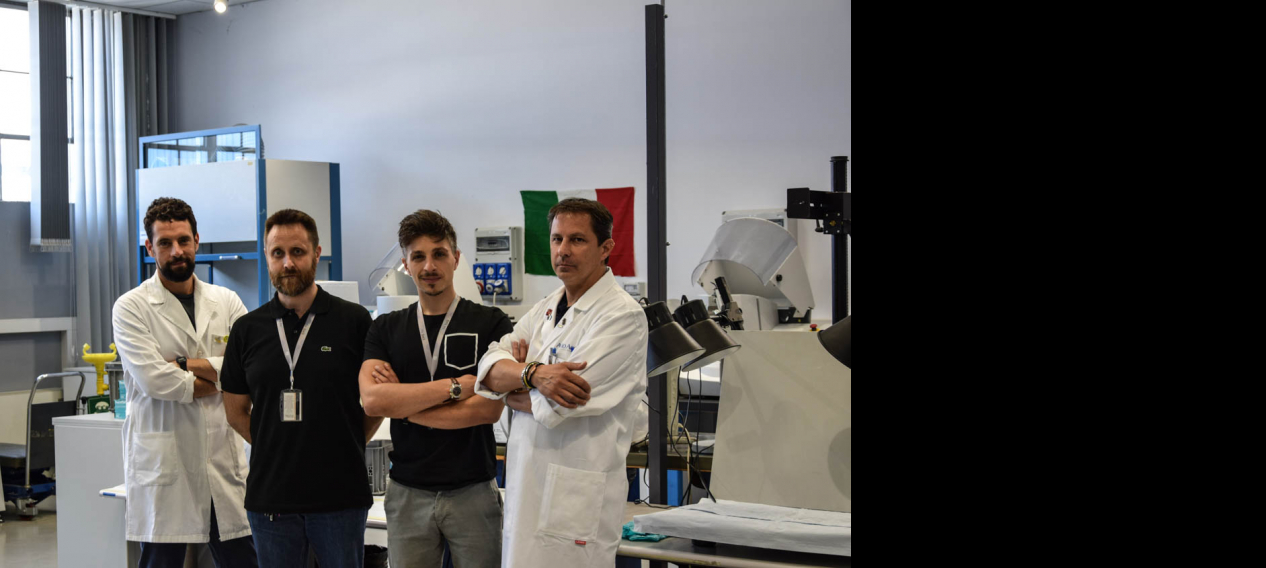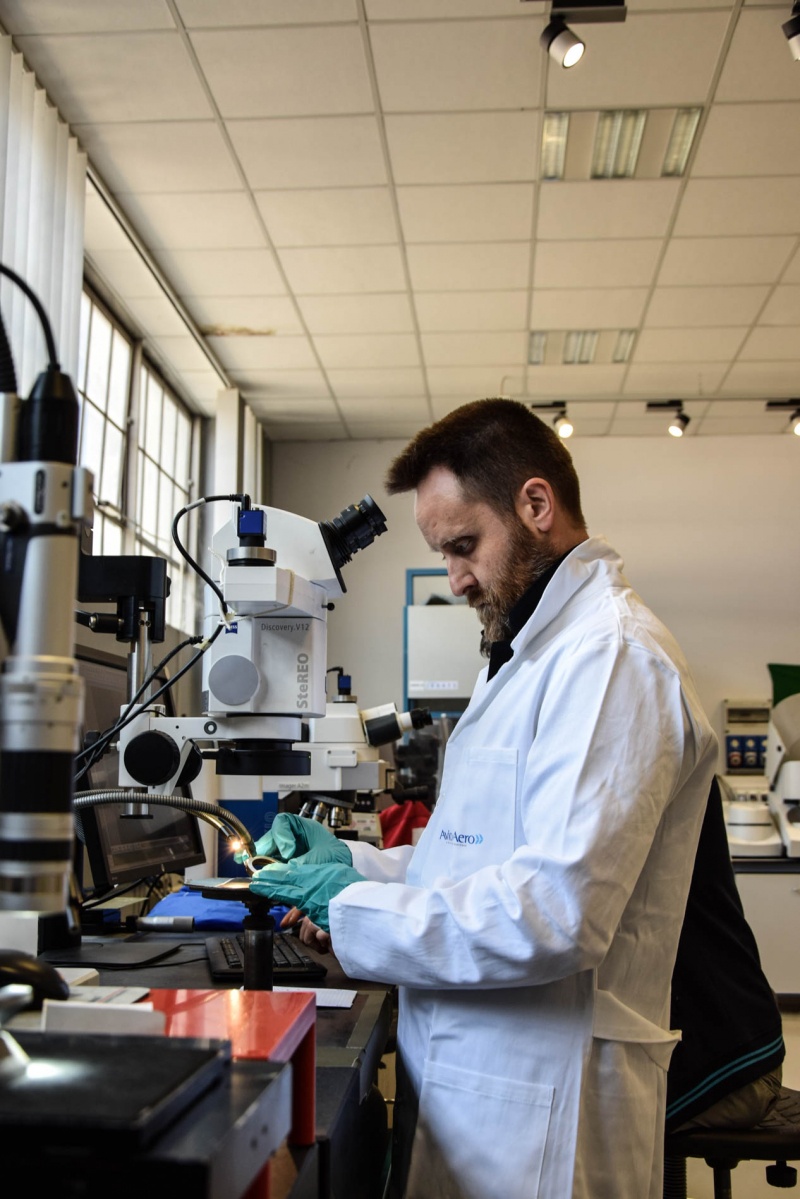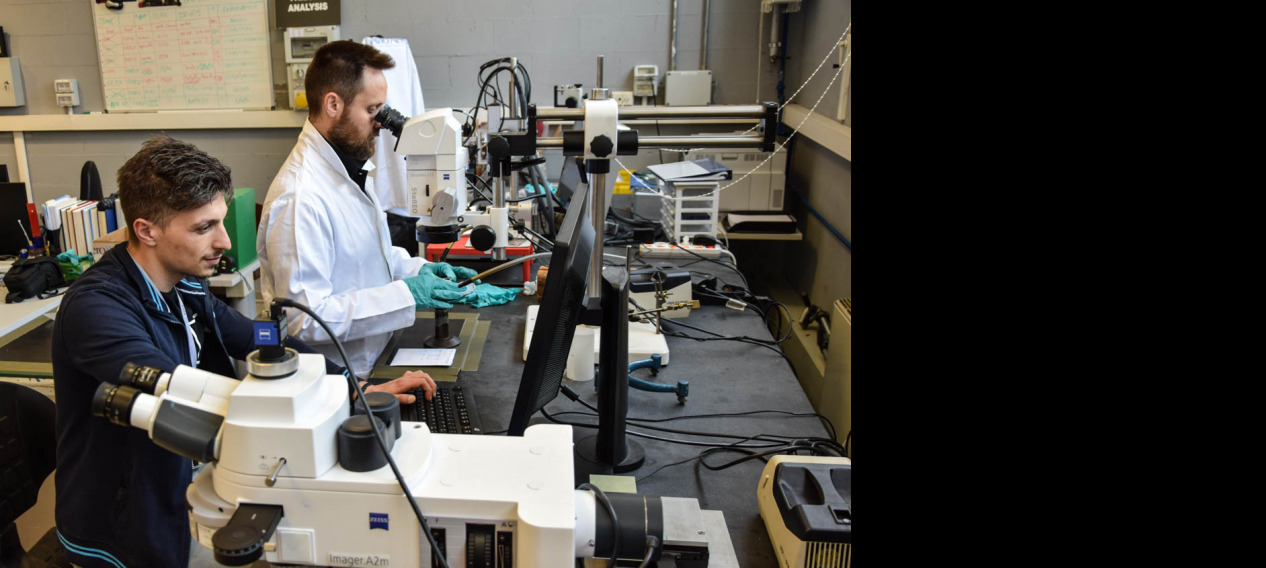Aviation
CSI Aviation
Investigations carried out by specialized engineers and technicians, who seek for the reasons of failures and damages happened to aircraft engines, are almost as infallible as a black-box.
Jun 2018
The first reassuring premise is that aviation remains the safest means of transport worldwide. In fact, according to the EASA official report (European Aviation Safety Agency), there was only one fatal air accident in 2016 out of all European scheduled flights (a record year for air traffic: almost 10,191 million flights in total and a daily average of 27,844) and 16 accidents without fatal consequences.
Nevertheless, even the engines of an aircraft can be subject to damages, accidents or simply sustain wear over time and in the course of the thousands, or millions, of hours in flight. It is for this reason that sometimes the black-box is not enough for mechanical damages inside the engine, and a more in-depth, more detailed analysis is required. Namely, the analysis carried out by aeronautical engineers and technicians belonging to Failure Analysis and Quality teams of Avio Aero, as well as those of GE Aviation. "Failure Analysis is the science that defines the primary causes, or most probable causes, for which a failure, a structural yield or breakage has occurred.
The final objective is to provide all corrective actions to prevent an event of this nature from happening again in the future", explains Luca Cassatella, Failure Analysis & Materials Lab Manager of Avio Aero. In the large laboratory of Rivalta di Torino, equipped with microscopes and cutting-edge machines for the analysis of specimens and samples that can scrutinize details a hundred times thinner than a hair, a blackboard with an amazing claim: "failure is part of success".
Cassatella began his career in aeronautics, after graduating in materials engineering from the Polytechnic of Turin, joining the company in 2001. In 2004 he was in charge of the Failure Analysis Laboratory: "about 85% of the components we receive come from engines that fly regularly (in service) or new programs in the advanced test phase. The investigations carried out by Avio Aero teams are related to all types of components produced by the company itself, and particularly parts which have also been designed: turbines (i.e. their discs and blades), and transmissions, including gears and bearings, and their external housings.
"Here at Rivalta we receive mainly transmission components which we then work on to try and identify the causes of the damage or failure. Fracture is usually the most common damage, but there can be surface damage, changes in the mechanical properties of the metal or even more severe deformation. The most common extrinsic failure during operation is still fatigue (i.e. fatigue caused by wear and mechanical stress), the analysis of its origin and how it has developed. Failure Analysis, however, is not an infallible science, and often it doesn't find the solution. The success of an investigation is strongly linked to the specific experience of the person conducting the analysis, as well as to the information and data supporting it. As an example, I happened to receive a transmission with a gear which was missing a fundamental part. This part had been separated from the gear during the incident and couldn't be retrieved from the ocean," Cassatella says.
When a damaged part arrives at the Rivalta laboratory, the first operation is the component inspection and photography it in the same conditions in which itarrives, on the shelf that the team calls the "morgue table". After that, investigators carry out the inspection using ever stronger magnifications until they can dissect the part and observe it under an optical and electronic microscope. This process uses analyses, hypotheses, scientific findings and photographic evidence, which then ends with a report establishing the so-called Failure Scenario.
"Sometimes even a tiny distraction is enough to cause serious damage to the engine components, or an excessively high temperature, foreign bodies like birds or volcanic ash, vibrations or excessive strain, even risky maneuvers carried out by the pilot," continues Cassatella. In Avio Aero, these specialists - who are able to trace every stage in the life of an aircraft engine just starting from a crack or scratch on the metal surface - are based at the facility in Brindisi as well as in Rivalta, where Cassatella works together with a team of 5 people. In Brindisi, a 'leading light' of aeronautical investigators carries out investigations on engine assemblies and especially on turbine components, also working with the Manufacturing Quality teams: there he also has his own "thinking room" within the metallographic laboratory.
Maurizio Piccione, born in Salento, is a self-taught engineer, having studied to become a mechanical expert and then, given his talent for metallography and fractography (the study of the physical structure of metals and fractured metal surfaces respectively, ed.), started working in the company in 1991. "I entered the investigation laboratory for the very first time as a technician and had the opportunity to learn a lot on the job and, at the same time, was able to attend specialized courses and conferences in Italy and abroad," says Piccione, who since the 90s, when the current Repair Station in Pomigliano provided maintenance and assistance for all Alitalia engines and also those of other operators, is one of the specialists involved in the most complex investigations. "Currently, I carry out investigations for all Avio Aero sites and, with the help of our engineers; I also provide technical opinions when requested by domestic and foreign military subsidiaries, commercial airlines, the NTSB (National Transportation Safety Board of the USA) and the OEM (Original Engine Manufacturer).”
"Metal materials, the super-alloys, from which the components are made, sometimes come to the end of their service life or their scheduled replacement interval perfectly intact. Today, engineering and testing involve almost everything, but man or nature can always affect the course of things", Piccione is the specialist that every pilot or test engineer would like to consult in certain cases. Sitting in his "thinking room", he works with optical or electronic microscopes (the one in Brindisi is one of the most advanced in Italy), considering the causes and creating high-definition fractured images of the fracture surface. Images similar to those of dendrochronology: a metal has the same veins as a tree trunk when cut longitudinally, but in this case it is not a question of years, but of the fatigue and stress that the metal has been subjected to before breaking. "The metallographic images of the super-alloys tell you the 'clinical history' of thermal exposure. Often, the first thing I do is try to understand if it has all started from a defect in the engine component material or from how the engine was being used, I think about how 'things work' and ‘the story the component tells' about the causes that led it to break. The most difficult aspect of our job is to understand why a certain phenomenon has occurred.”
Investigating aircraft engines is an extremely stimulating work and some young people will certainly think that material or chemical engineering will surely lead to eminent research careers, but maybe not as exciting as the possible careers of mechanical or aerospace engineers. This thought could also have crossed the mind of Enzo Palermo, a mechanical engineer who has collected work experience in the automotive and consumer goods sectors.
But in 2015 Palermo joined the Rivalta team and discovered the world of Failure Analysis, realizing that "very few companies perform this type of analysis and technical investigations, and personally I had only had experience of this kind in the electronics field. While there are much more varied and more interesting case studies on aircraft engines. We are currently working to digitize and increase the exchange of knowledge and case studies that we manage in Italy with American teams, like those with European teams of the EDC in Warsaw and the TTC in Istanbul".
And lastly, you might be asking yourself how a fear of flying might be dealt with if one of these specialists, perhaps Maurizio Piccione, suffered with it? "I am extremely confident when I travel on planes: engines and components are subjected to thousands of hours of testing, in conditions which could even be classed as extreme, before going into service, and they are designed by outstanding engineers. However, if I think about it, while I am on a plane in flight, I can imagine exactly what is happening inside the engine, down to the very smallest part".
Cover image source: sublog.divecircle.com










